
@ThroughOcular shows the beauty of plants, fungi and algae
Beautiful microscopic specimens play the leading role in the course 'Biodiversity Plant' for first-year Biology students. Normally these are put back in storage right after the course. But not this year!
Together with artist Franz Anthony, biology alumnus Werner de Gier presents a selection of 36 specimens from the Leiden educational collection. Every day the two will post a photo on Twitter and Instagram. Here the colourful pictures draw a lot of attention.
Stained glass
‘During our first-year course we study the evolution, biodiversity and anatomy of plants, fungi and algae’, says De Gier. As a recently graduated biologist, he assists in the practical sessions of the course. ‘Here, the students delve deeper into the subject by looking at different cells and tissues under the microscope and by drawing them in detail.’ While preparing for the sessions, he discovered how beautiful the material was. ‘The assistants always study the material in advance. We also make reference pictures for ourselves by taking pictures from samples that are sometimes hard to understand. Some of those slides appeared to be like works of art that resembled stained glass windows!’
Low budget
De Gier, therefore, decided to keep a logbook of all preparations and to post them on his own Instagram Story. 'Franz Anthony, an artist and good friend, wanted to do some fun with the pictures. He organises art projects in the context of science communication more often'. The duo thought the photos were too good to keep for themselves. 'We want to show the world that, although static and very small, such preparations can be very beautiful.' De Gier just took the photos with his mobile phone. 'I was lucky that all the photos were the same size and razor-sharp; apparently, the rubber ring of the ocular creates the perfect distance between the camera and the object. No need for expensive cameras!'
Dutchman's pipe
It is difficult for De Gier to choose his favourite preparation because he finds all of them beautiful. ‘But I do have a soft spot for specimen number II.VIII. This shows the cross section of a woody stem of an Aristolochia, also called the Dutchman’s Pipe.’ The plant is already beautiful in its living form, and according to De Gier, the preparation has beautiful colours. That is why he decided to use it as the project’s logo. And, when they have gone through all 36 preparations, there still is hope. 'Course leader Erik Smets has already hinted he has many other slides from old courses the taught. He told me that these preparations are coloured just as beautiful, so who knows, there might be more in the future.’
Curious about the rest of the collection? Follow Through the Ocular on Twitter and Instagram: @ThroughOcular.
During the module ‘The Tree of Life’, students learn about the development of plants, fungi and animals. The course ‘Biodiversity of plants, fungi and protists’ in which De Gier assists, focuses specifically on plants, fungi and algae and weeds. The course is given in collaboration with Naturalis Biodiversity Center, where De Gier is currently working. The preparations are property of Naturalis.
-
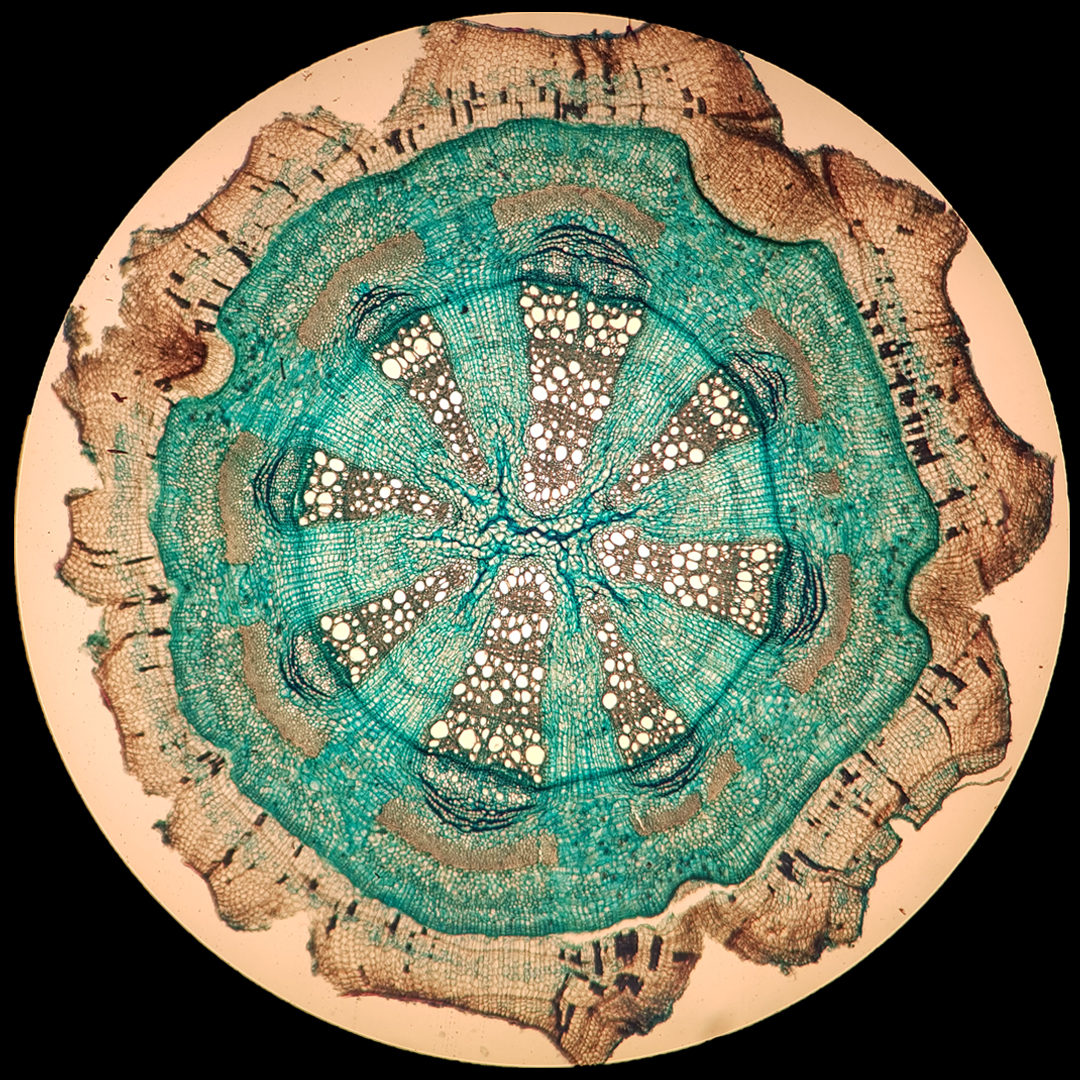
Section of a stem of a woody Aristolochia sp. - Dutchman's pipe. ~ The stem of the Dutchman's pipe shows a clear corky layer on the outside of the stem, the actual bark. Underneath, between the softer parenchymatic, blue cells, lie the vascular bundles of the plant. Here you can even see year rings in the form of eight bundles of wood barrels. Each of the bundles has an area with large wide cells (created in the spring) and smaller narrow cells (created in the autumn). Translated with www.DeepL.com/Translator -
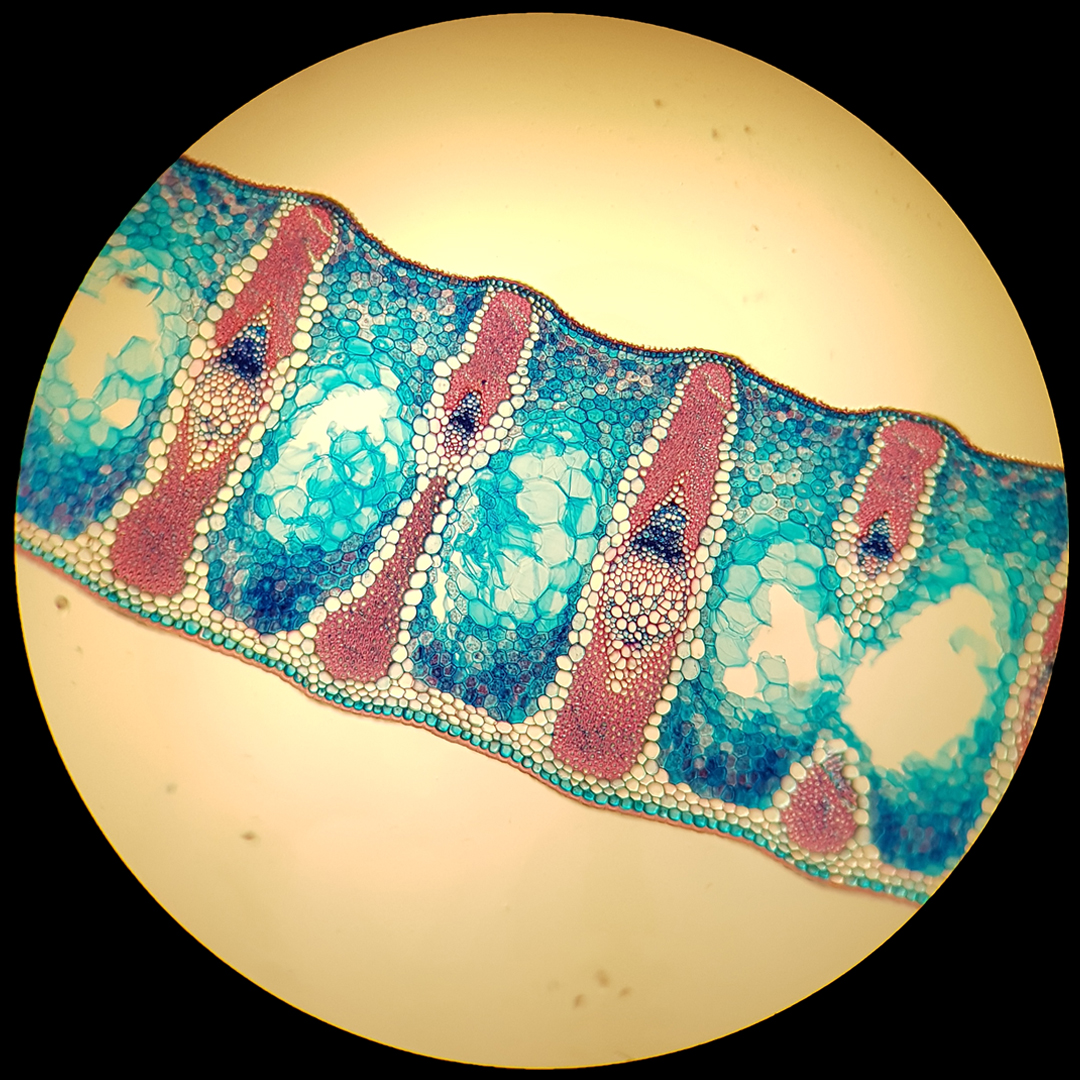
Cross section leaf Rhoeo sp. - Moses-in-the-cradle. ~ The transport tissue or vascular bundle tissue of this leaf is clearly visible as eye-shaped areas surrounded by red firmness tissue (sklerenchym). Furthermore, several types of parenchymatic tissue can be seen, as the blue cells between the vascular bundles. Parenchymatic tissue is often blue but green in the plant itself: this is the tissue with which the plant performs photosynthesis. Translated with www.DeepL.com/Translator -
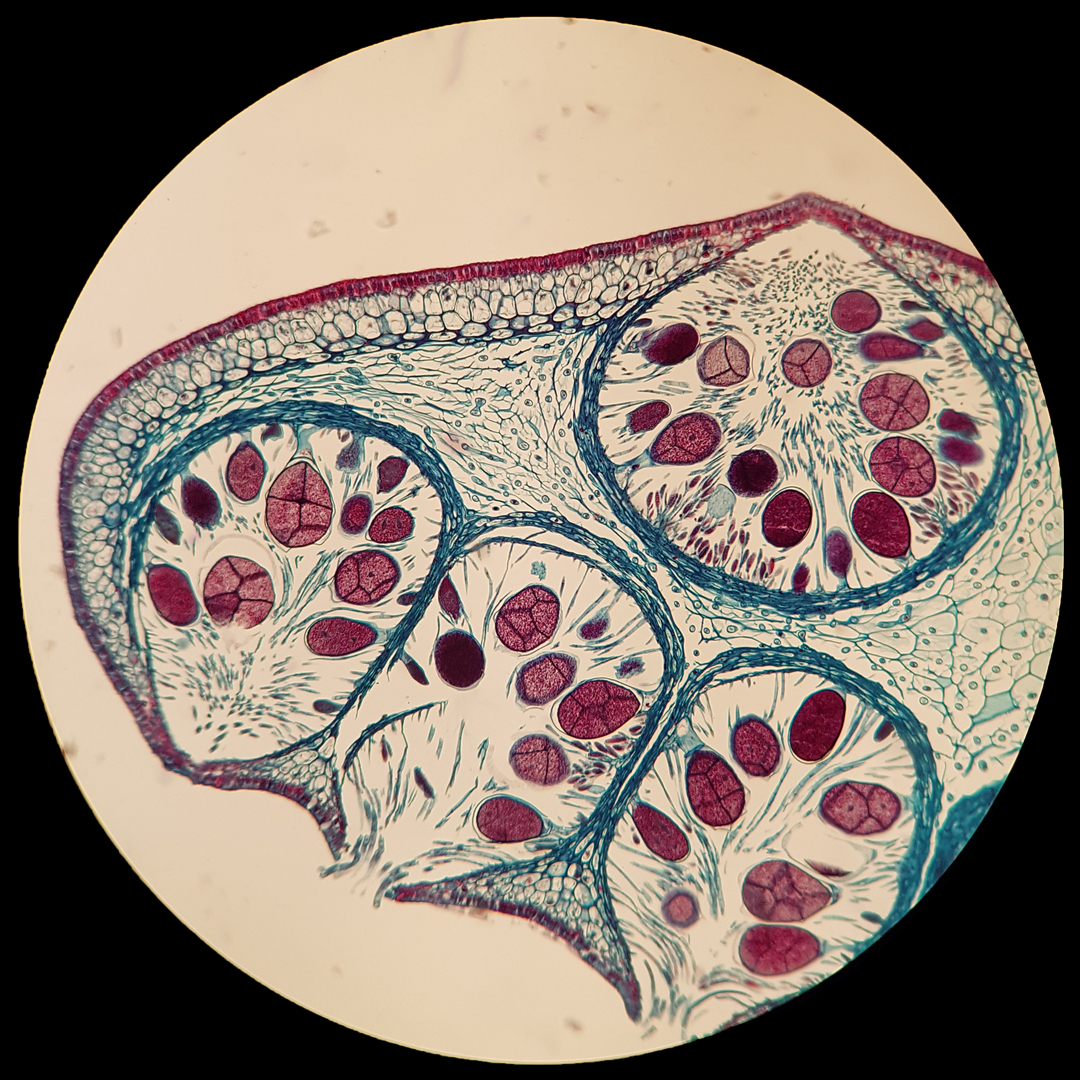
Section of a receptaculum of Fucus sp. - bladder wrack/sea oak. ~ The dark seaweed you can find on the beach has bladders that you can let burst. These are called receptacula and are filled with reproductive organs. The small holes in the vesicles are openings of the conceptacula. Each of these openings contains both male (small dark red structures) and female genitals (larger, compartmentalised, red structures) that release antherozoids (sperm) and eggs. -
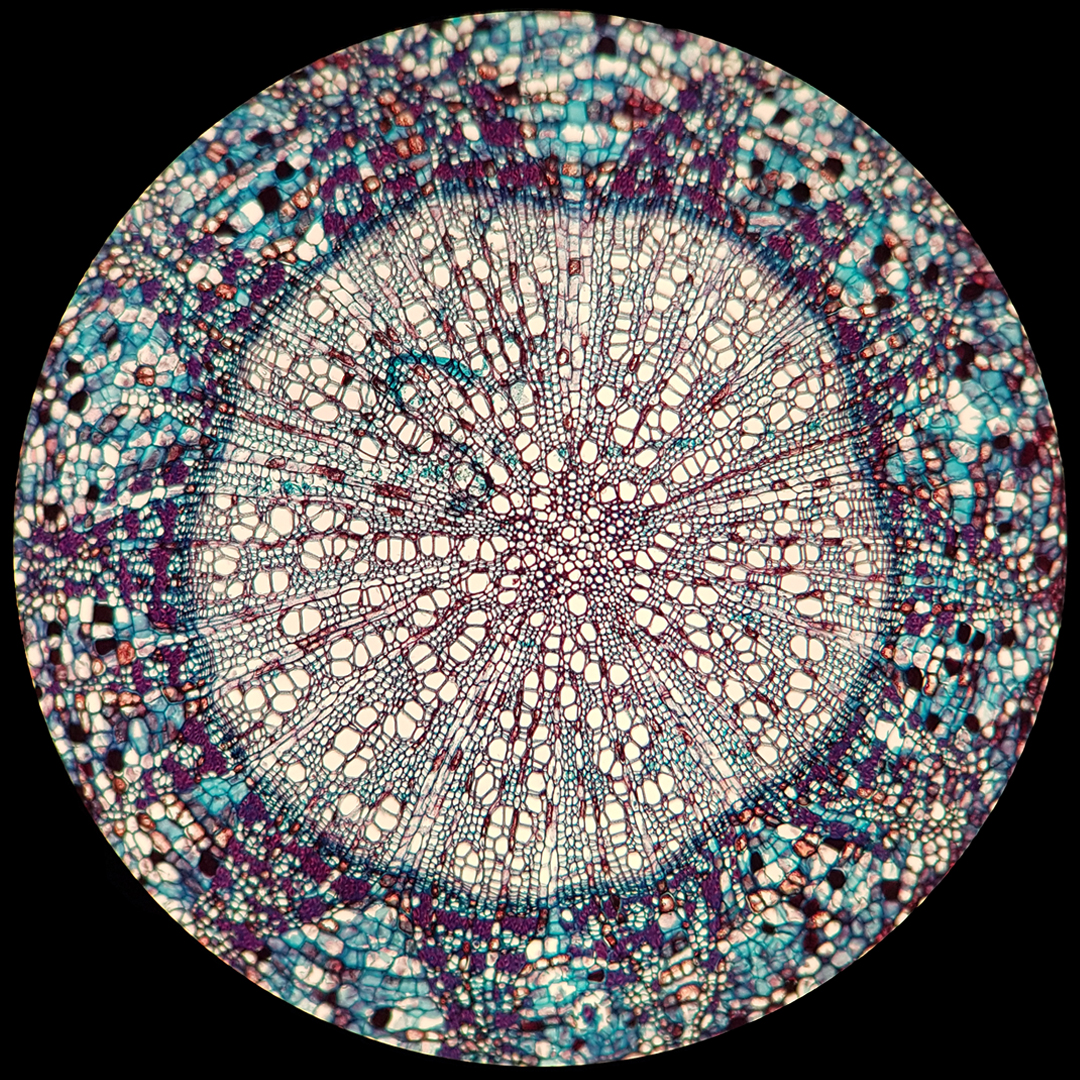
Section of a root of a Tilia sp. - Lime tree Here you can clearly see a root is not a uniform unit, but is divided into an inner and outer cylinder. On the inside the wood barrels are present in the form of hollow white cells. More outwards, between the red areas, are the bark barrels. Between these areas lies a row of dividing cells called the cambium, which can be compared to human stem cells. -
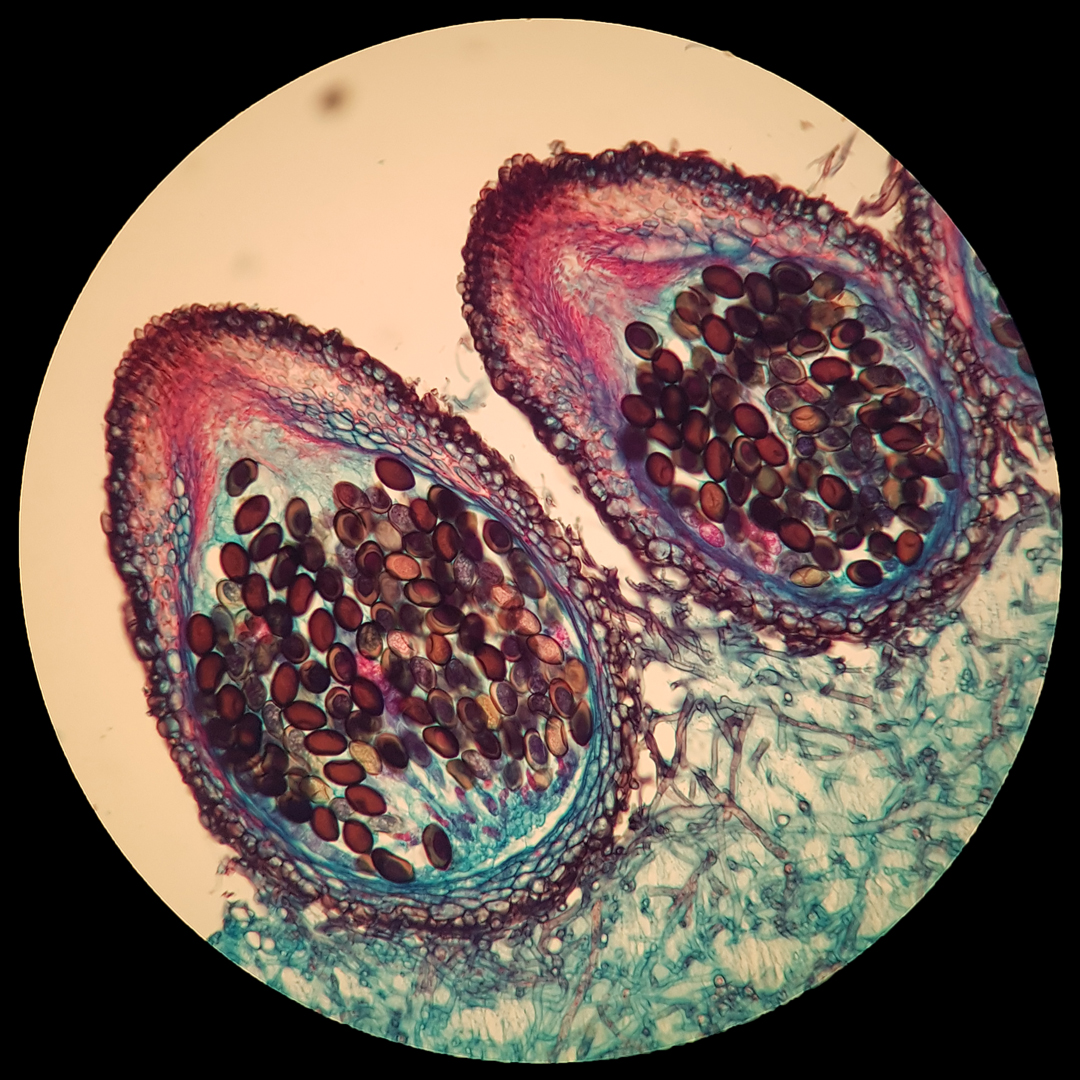
Cross-section of two perithecia of Sordaria sp. - a fungi from the division of ascomycetes. ~ A perithecium is a bulbous or bottle-forming fruiting body. Perithecia are typical for certain groups of sac fungi: spores form in the sac shaped structure. At the top there is an opening, through which the fungus can release the spores (here: eight ascospores per strand).
